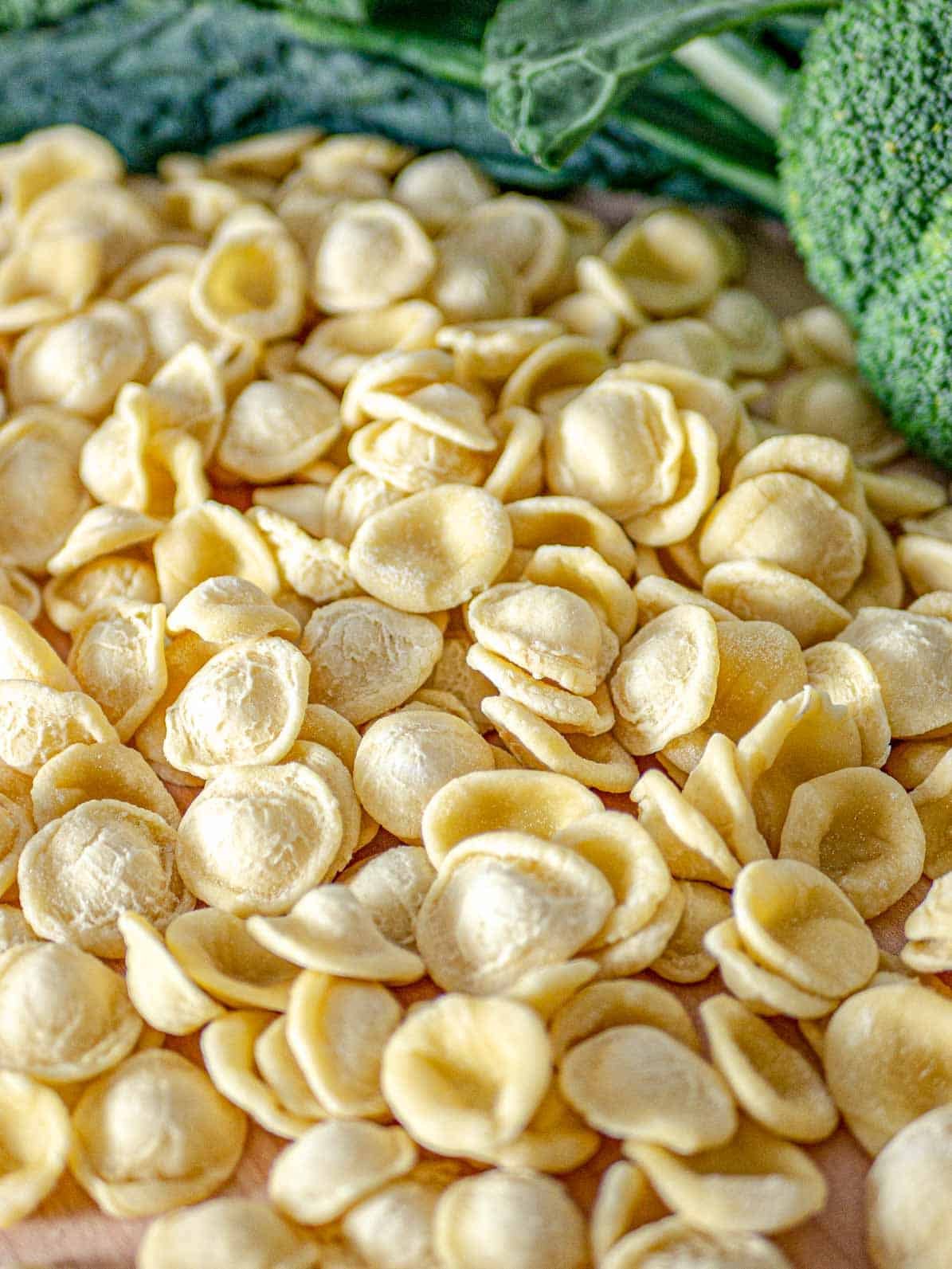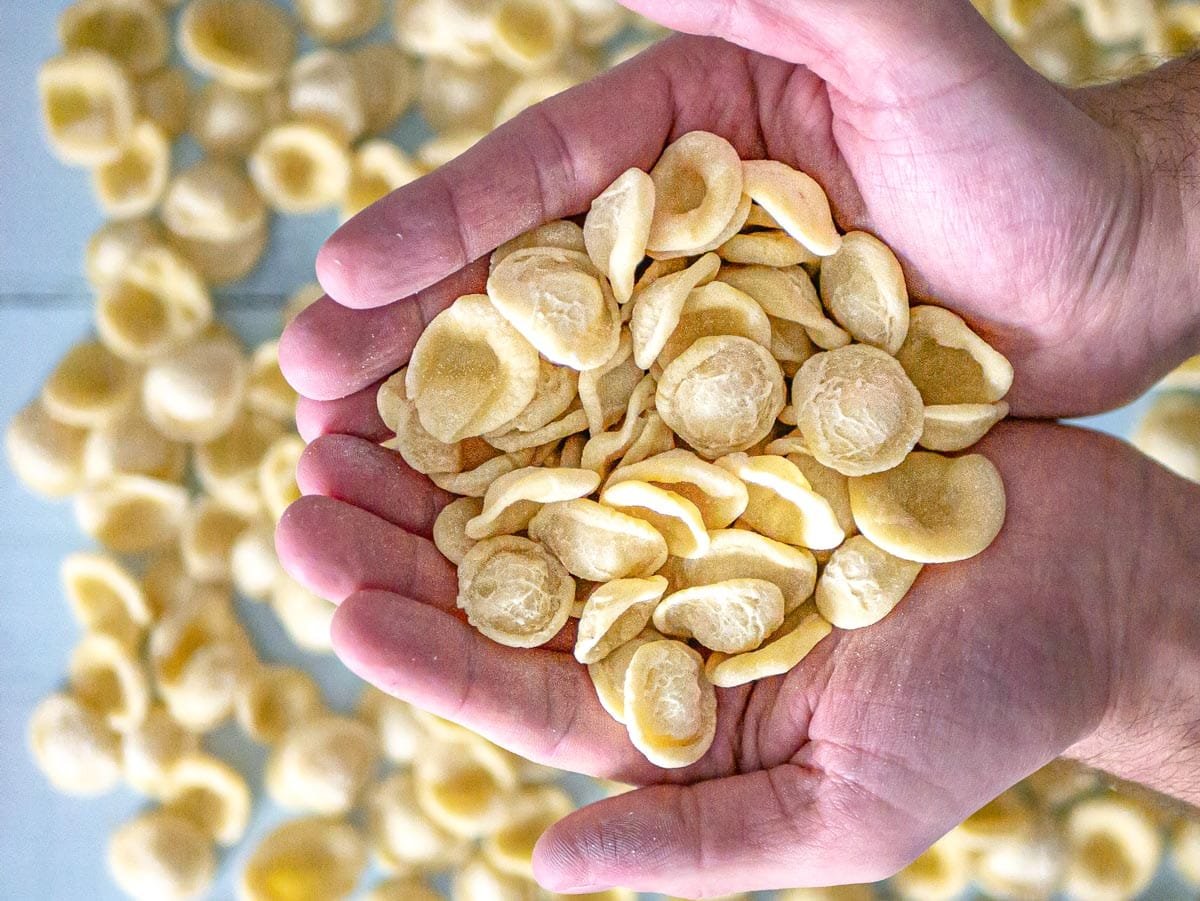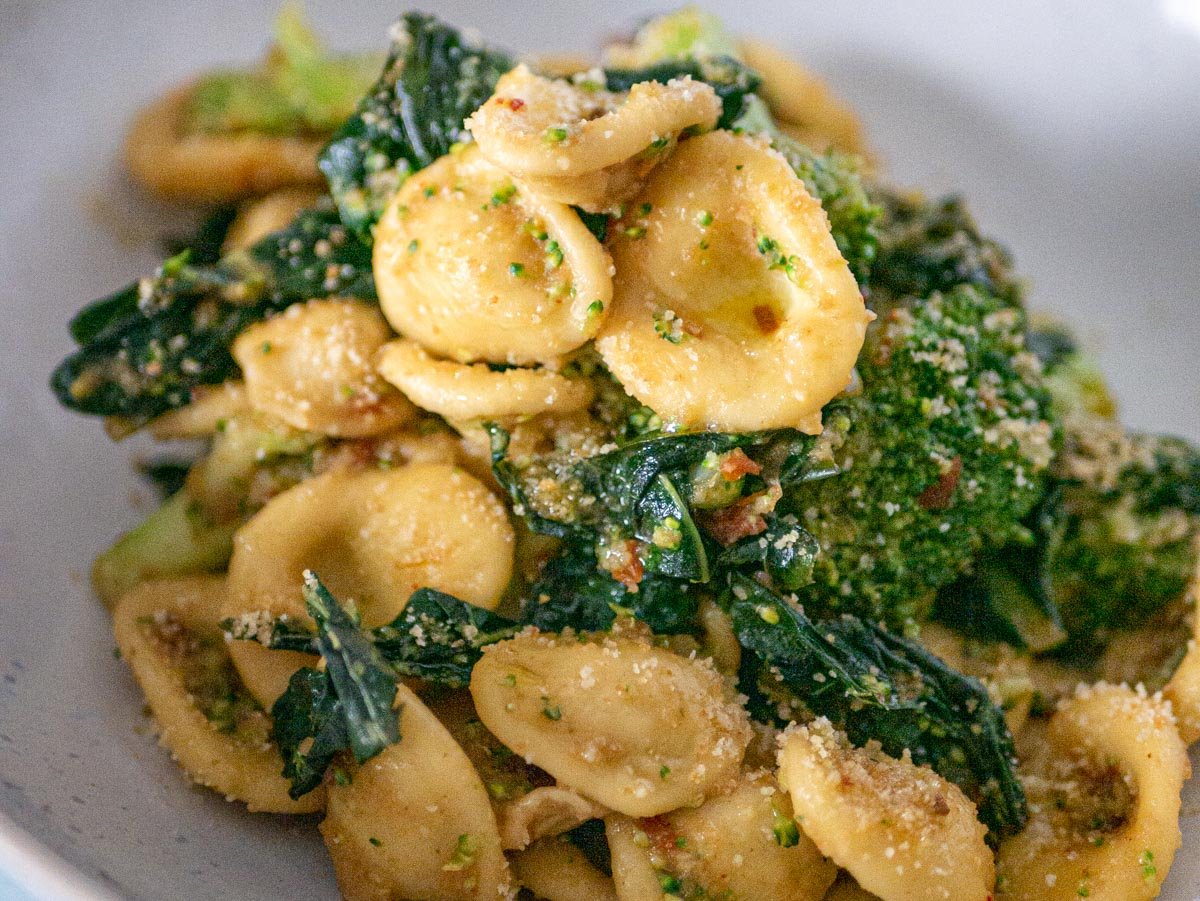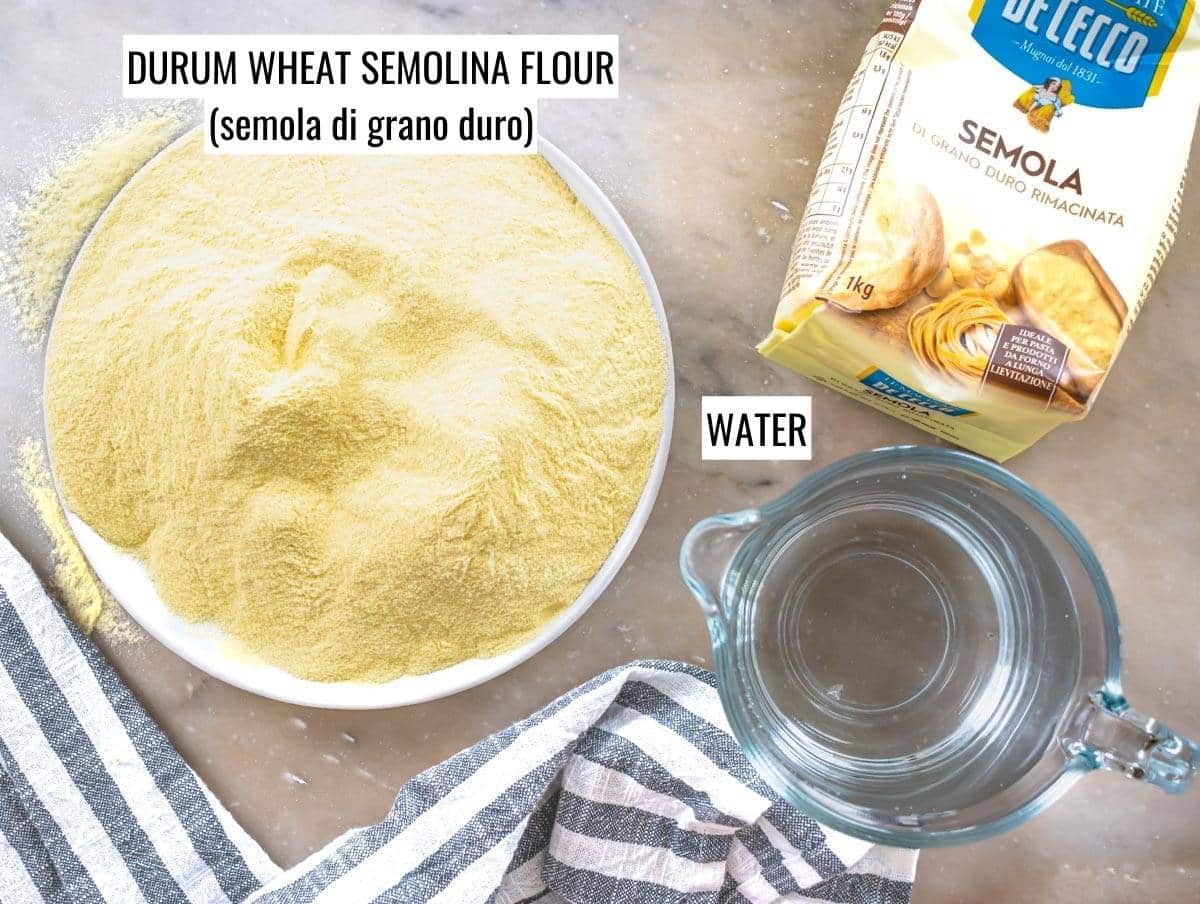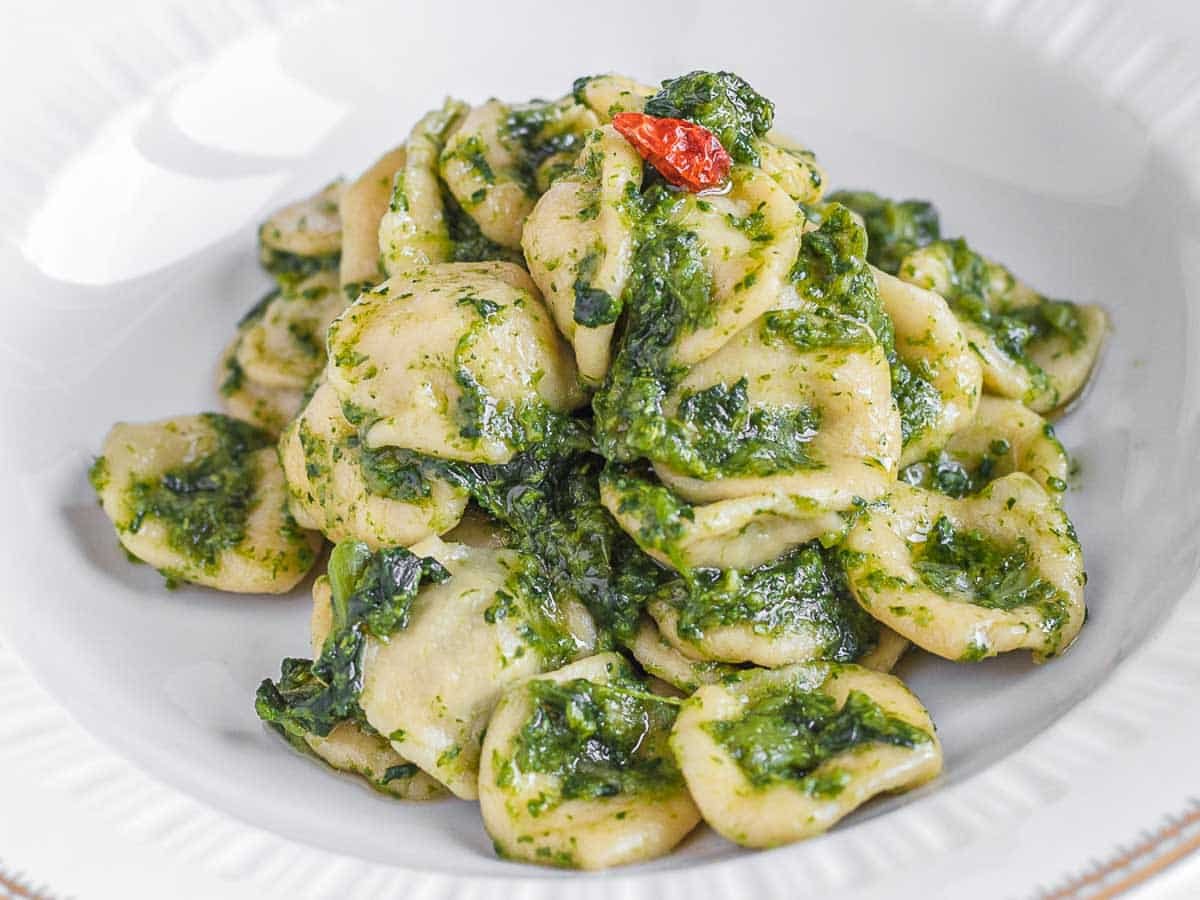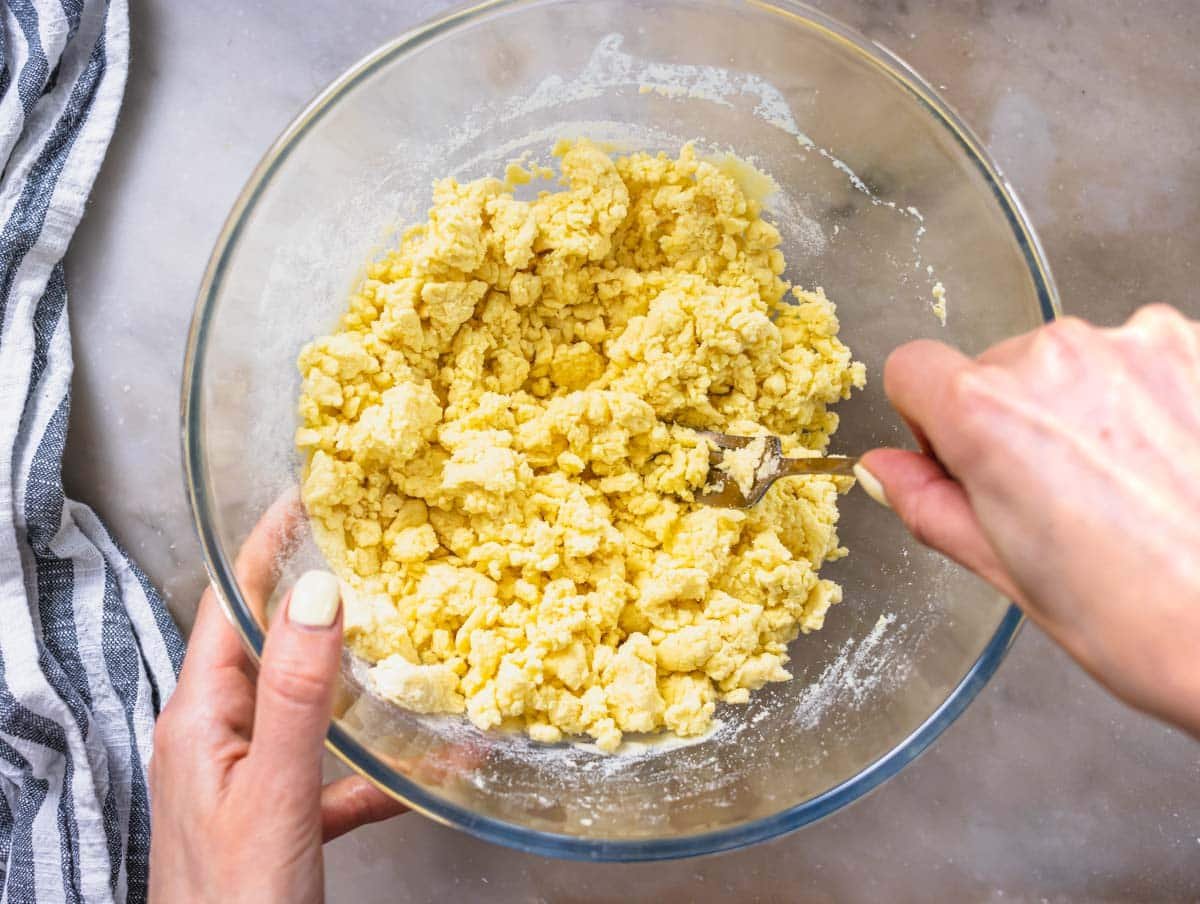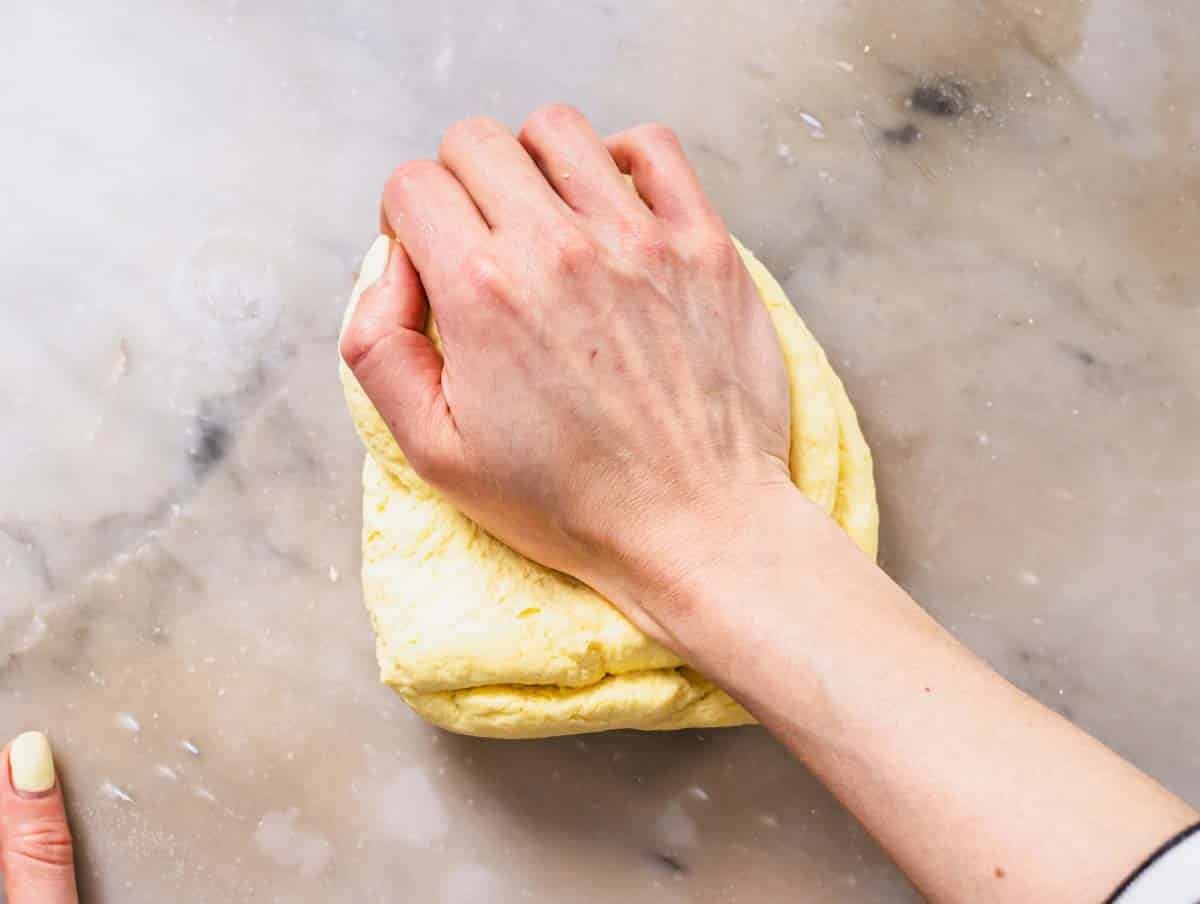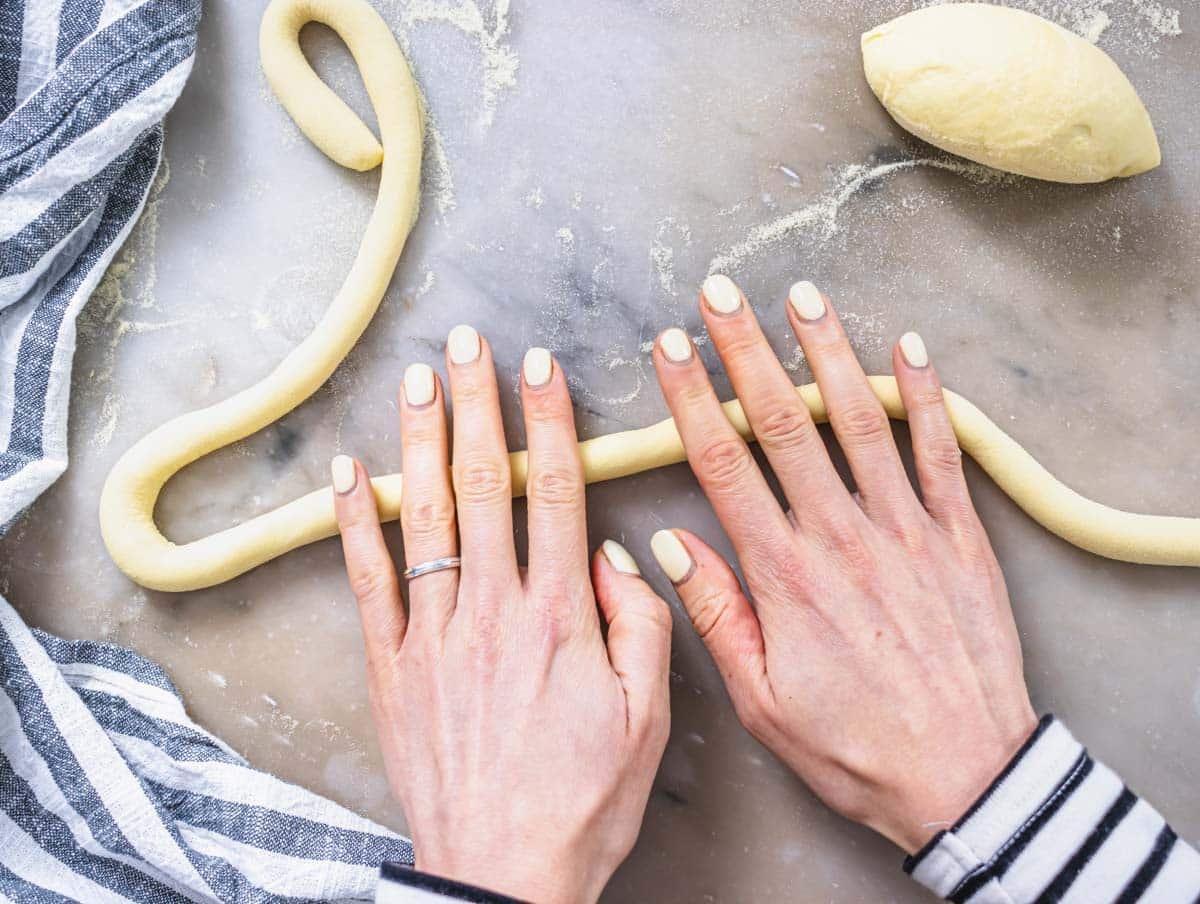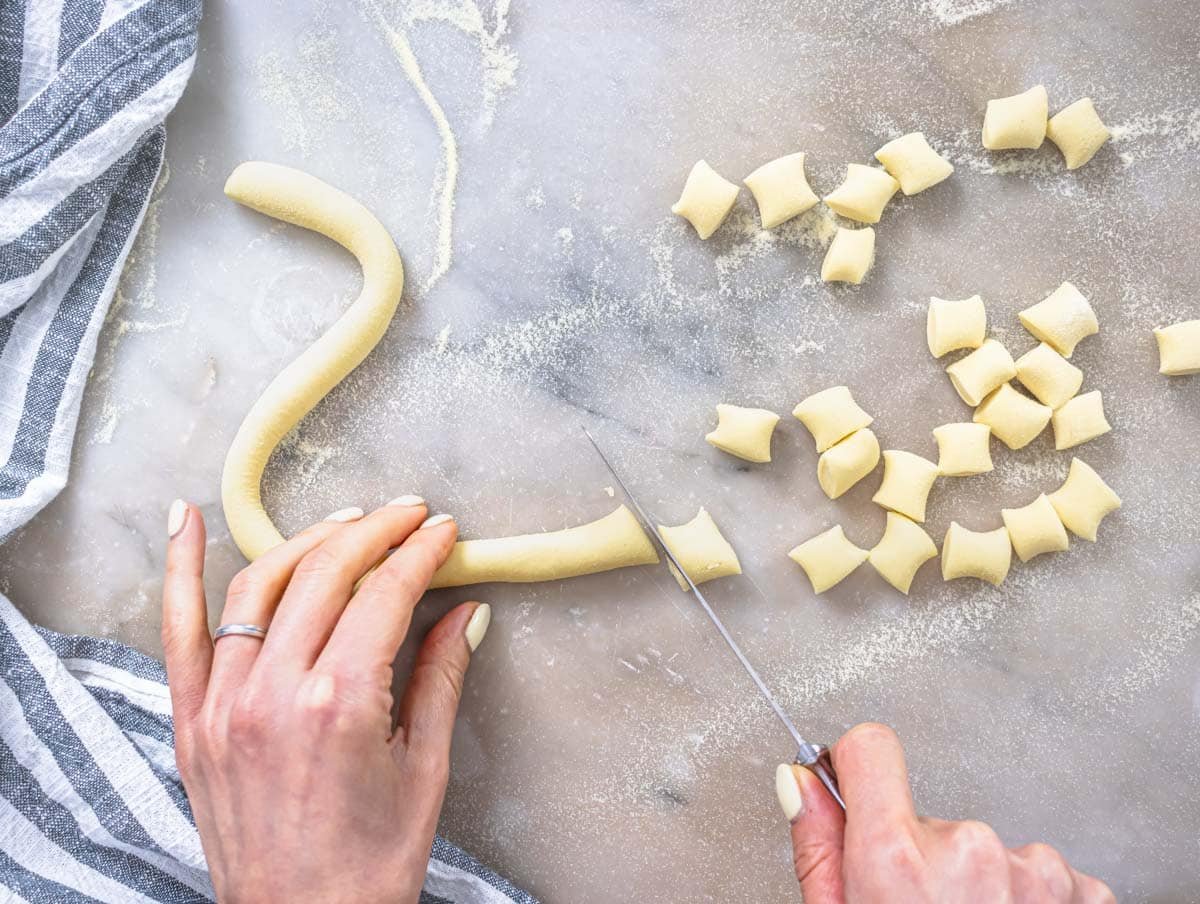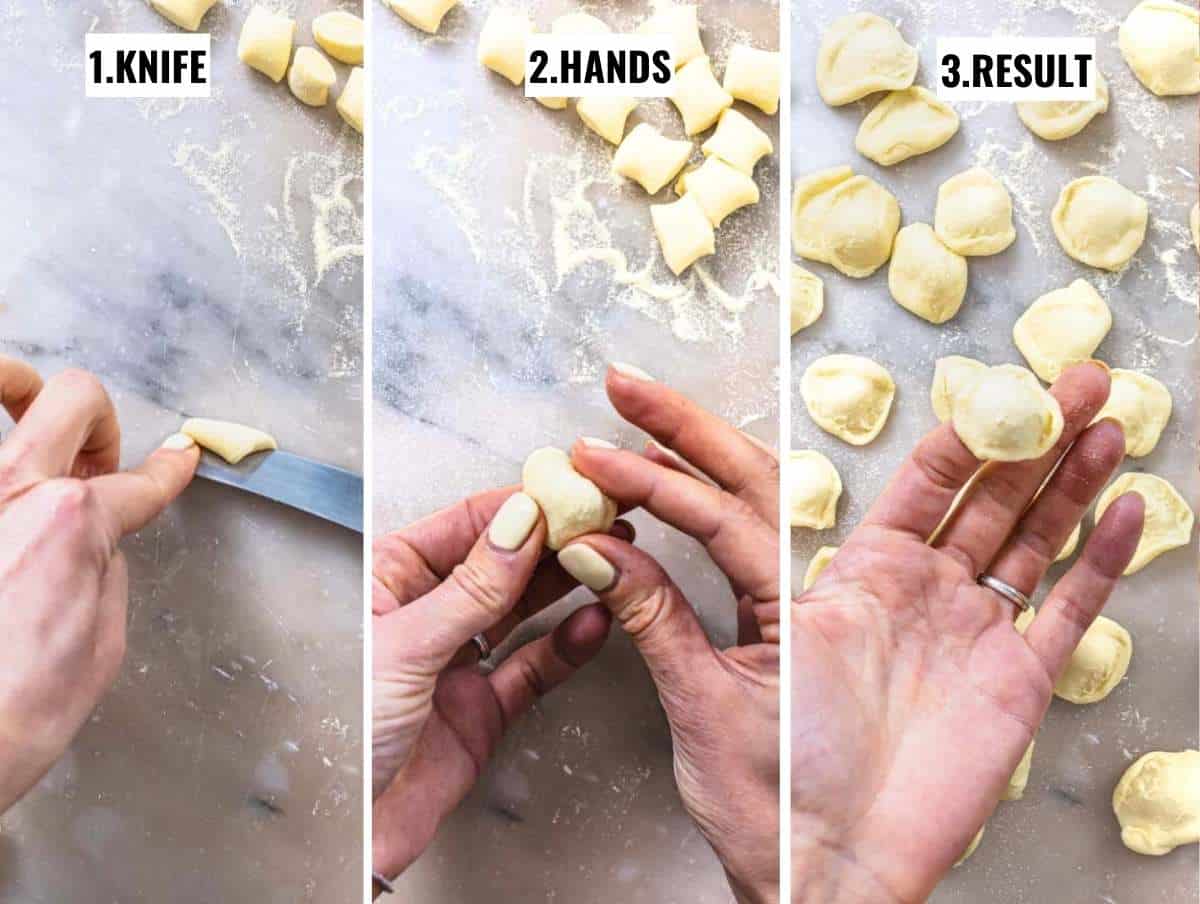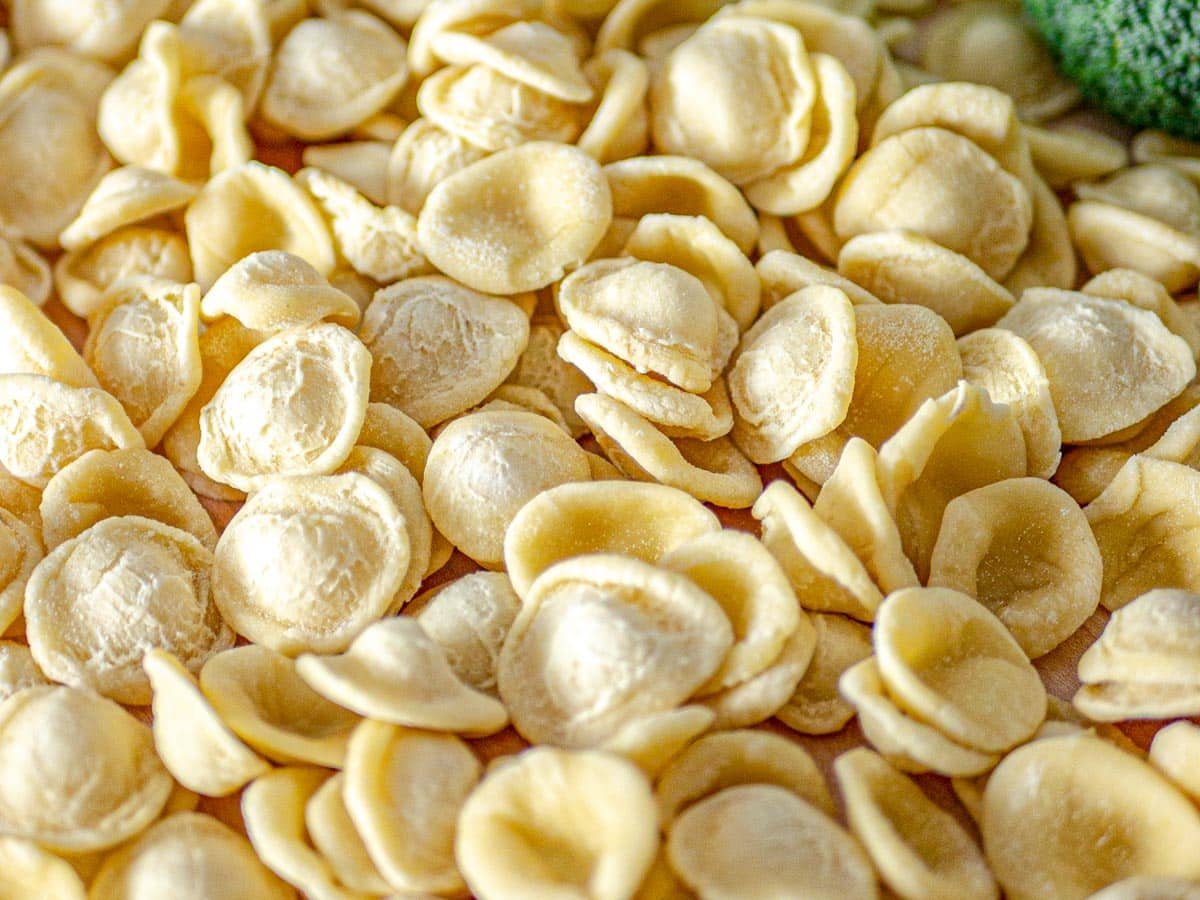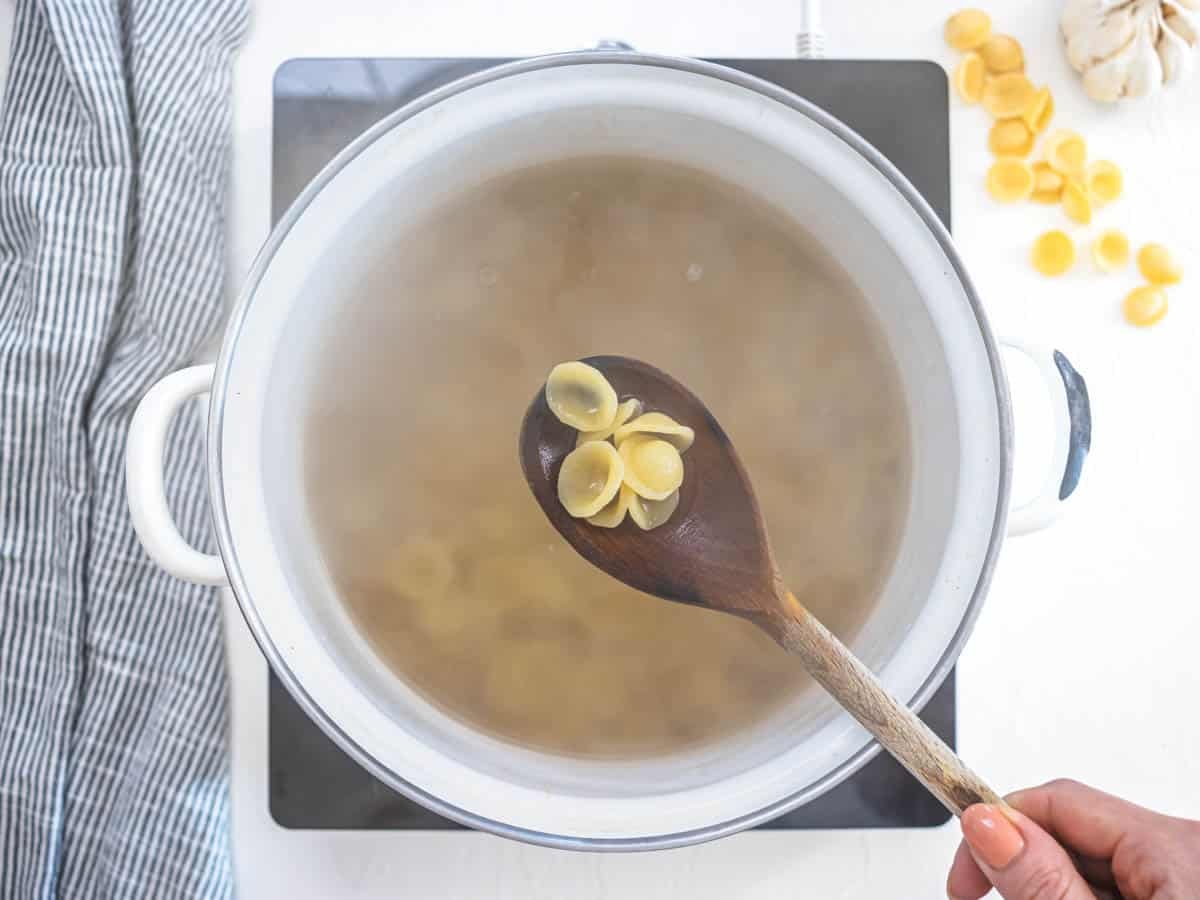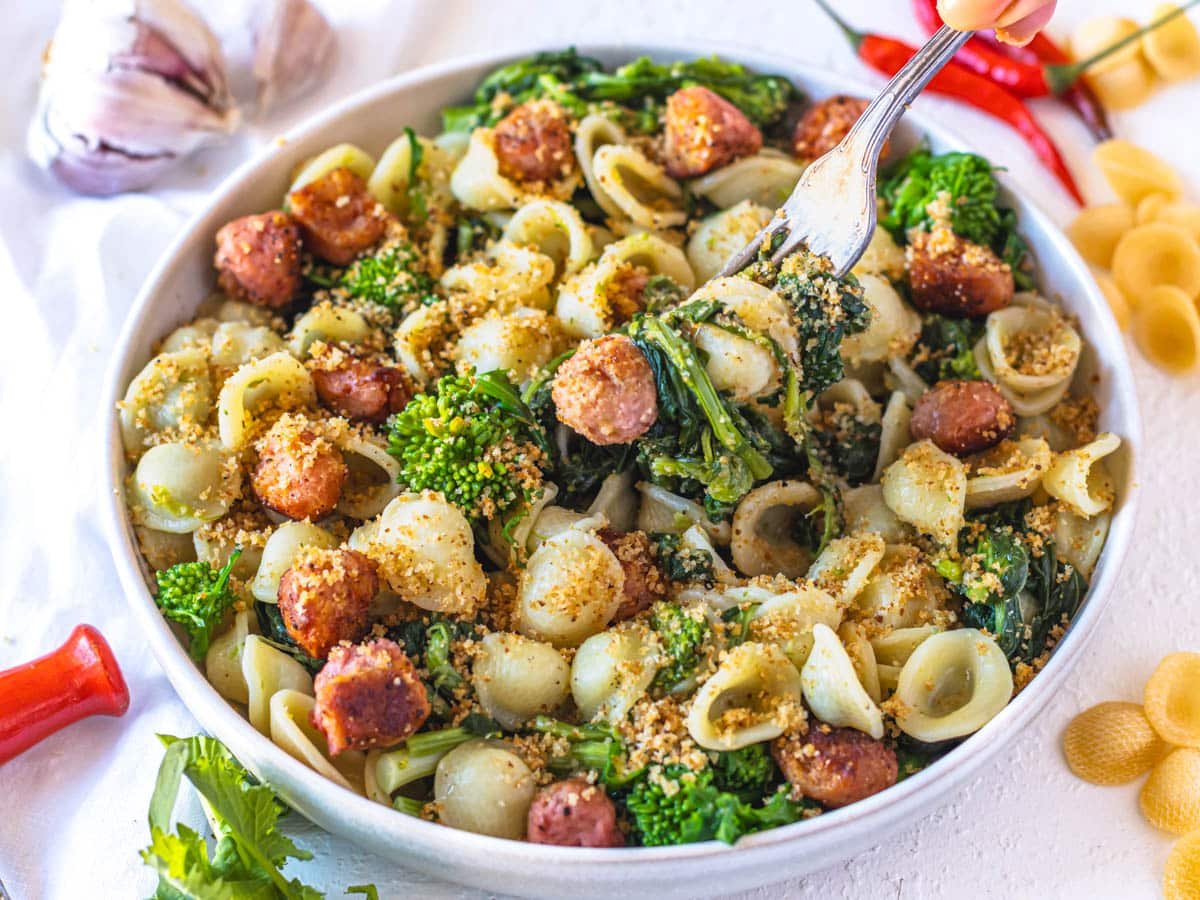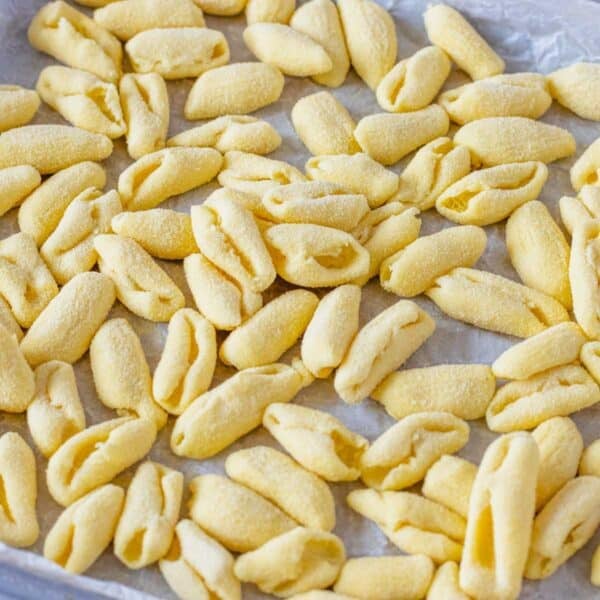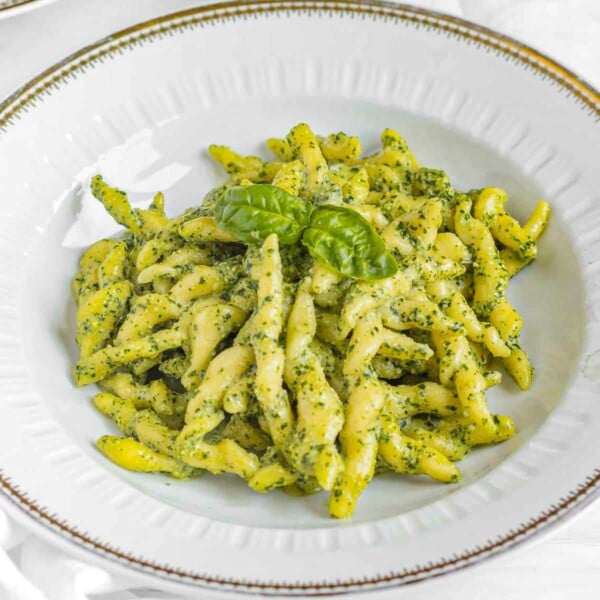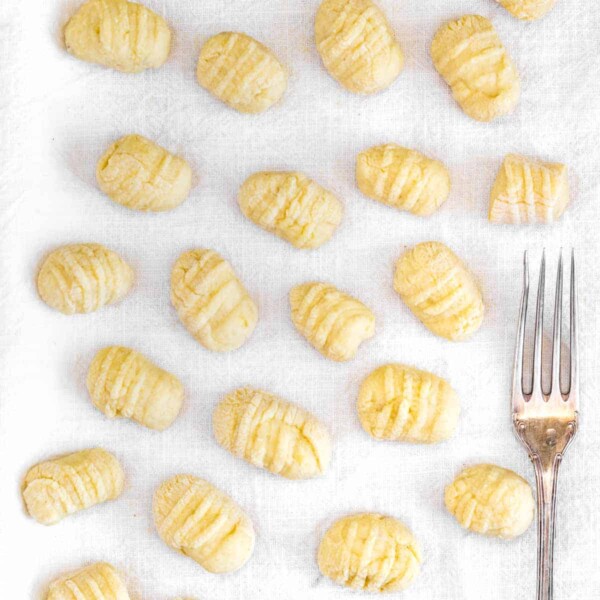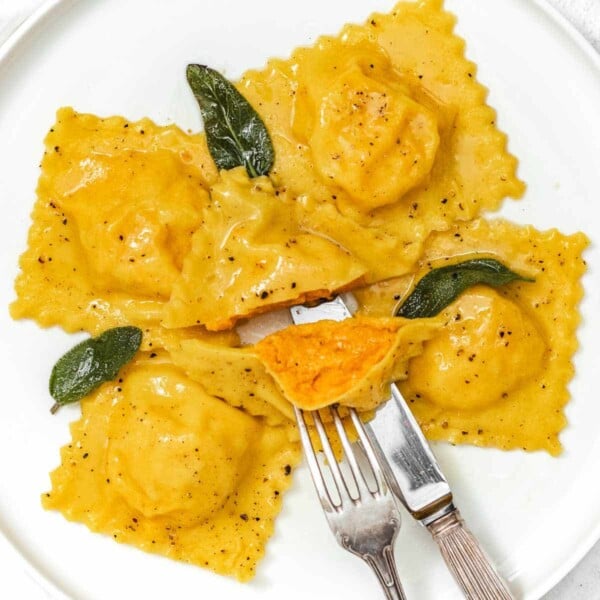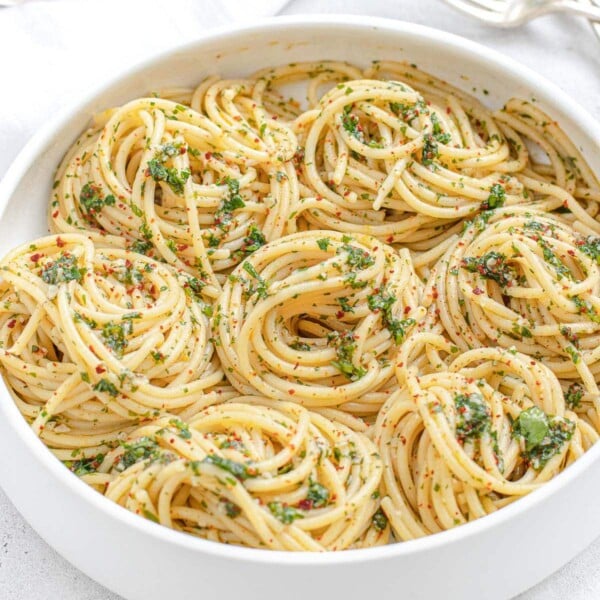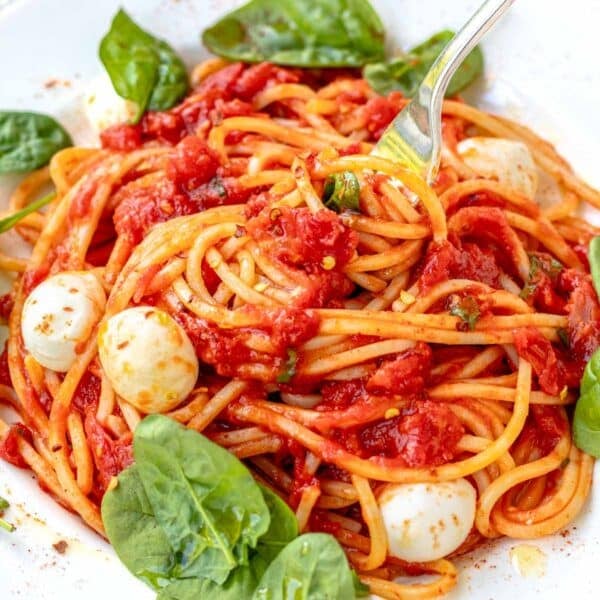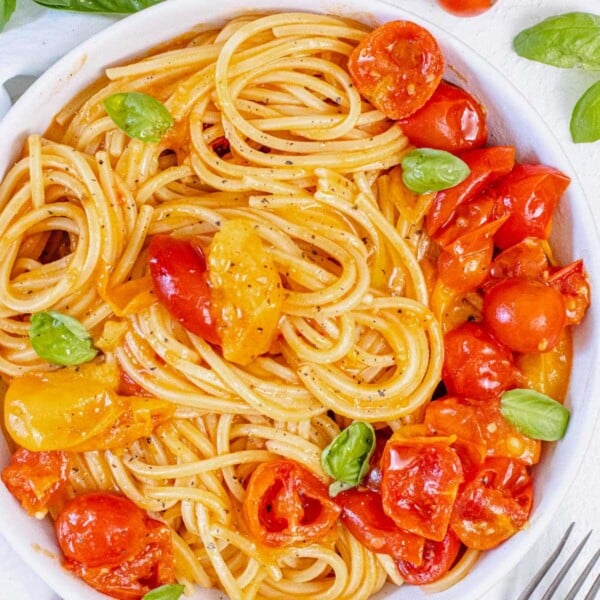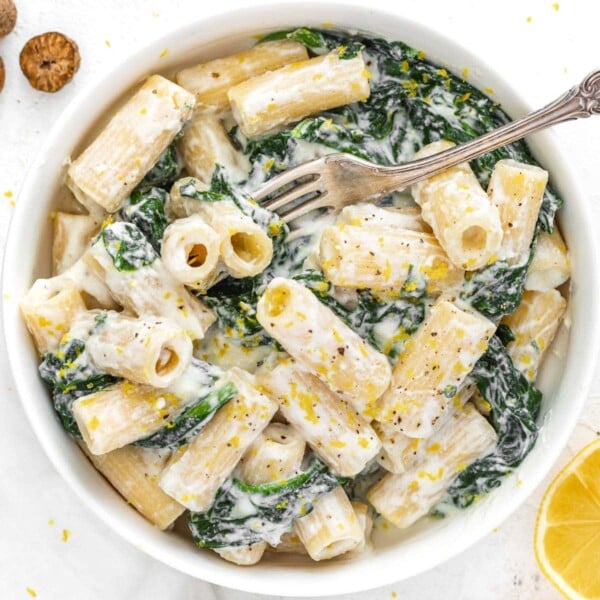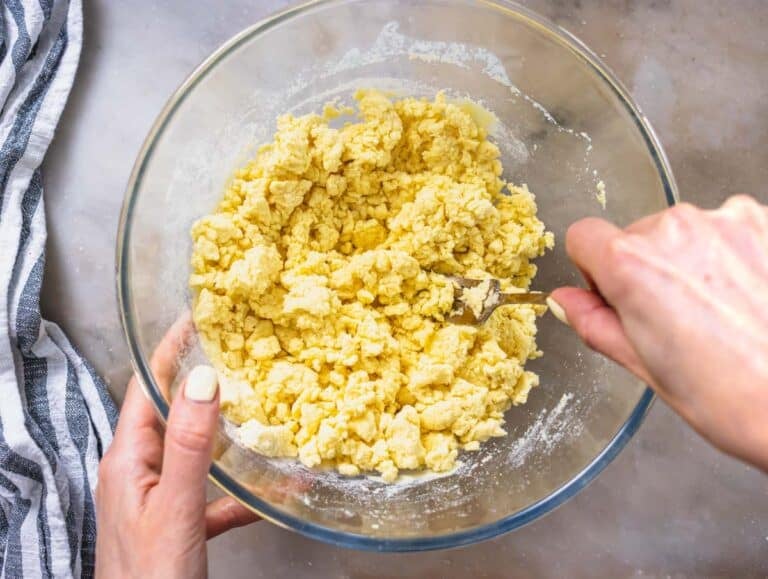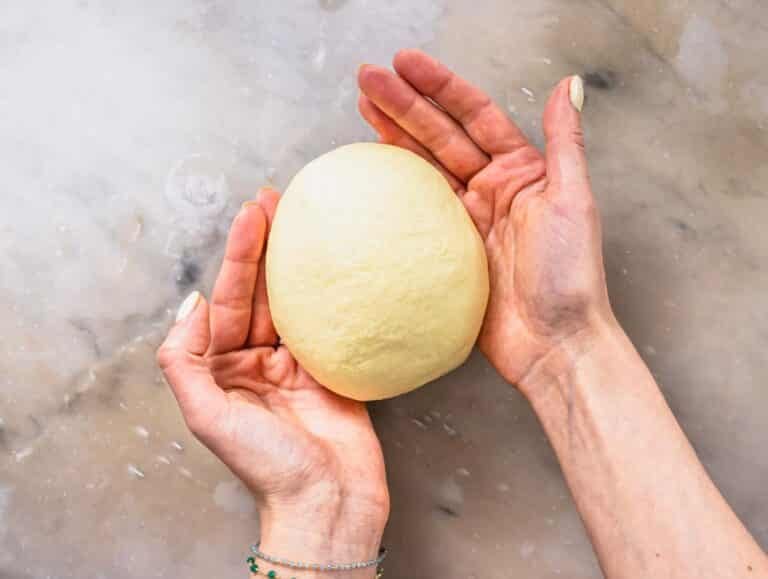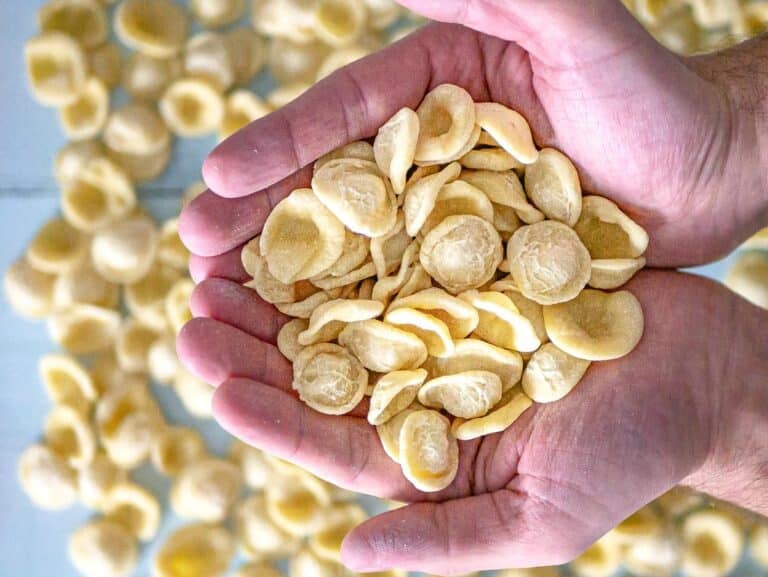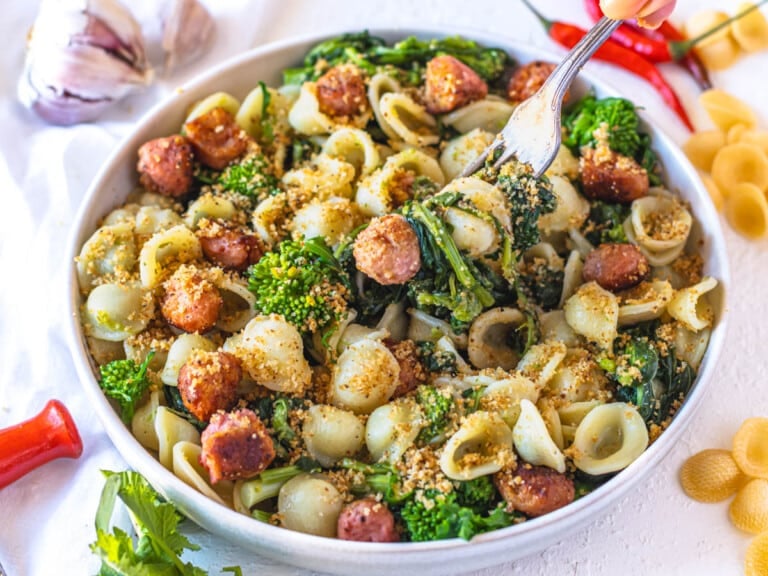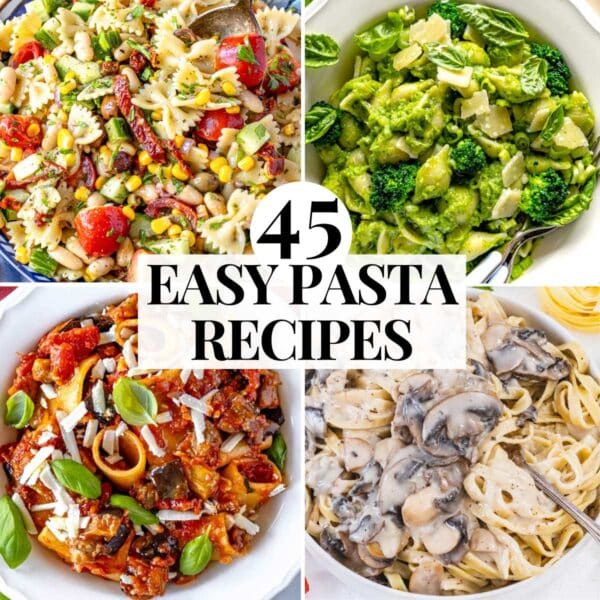You won’t need any special equipment, and this recipe won’t take much longer than 45 minutes. In this post, you’ll learn how to make orecchiette at home. We’ll share the authentic recipe from Bari, Puglia, Italy. Dietary Note: this recipe is suitable for a vegetarian and vegan diet.Don’t have time to read the full blog post? JUMP TO RECIPE HERE!
What is orecchiette pasta?
Ingredients & Substitutions for orecchiette
How to make homemade orecchiette pasta
How to cook orecchiette?
Storage & Make ahead
More homemade pasta recipes
Cavatelli Trofie Gnocchi Butternut squash ravioli Sweet potato gnocchi
More pasta recipes
Orecchiette means “little ears” in Italian due to their round, ear-like shape with a concave center. Like cavatelli, strascinati, and trofie, orecchiette is made with durum wheat semolina flour, water, and sometimes salt. The authentic Italian recipe doesn’t contain eggs, butter, or oil and is suitable for vegetarians and vegans. Fresh homemade orecchiette pasta has a beautiful, irresistible texture when cooked. Thanks to the semolina flour, they are slightly chewy. Their rugged surface helps the sauce stick. They have a thin center and slightly thicker edge, making them incredibly satisfying to eat. You can serve orecchiette with a classic pomodoro sauce or with broccoli rabe, as they do in Bari, Puglia. They are also delicious with a creamy broccoli sauce, a quick cherry tomato sauce with arugula, or basil pesto.
Durum wheat semolina flour
Durum wheat semolina flour is coarser than regular wheat flour. It has a beautiful yellow hay color and maintains an al dente texture when cooked. We recommend using Italian imported durum wheat semolina flour. Three brands available worldwide are De Cecco, Caputo, and La Molisana, and they are sold under the name “Semola di grano duro.” In the USA, Bob’s Red Mill sells a good one.
Water & Salt
You can use tap water if yours is drinkable. Salt is optional in the dough. You can add a pinch if you want. Fine sea salt is best. NB: There is no oil, salt, eggs, or other ingredients in the original recipe for orecchiette from Bari, Apulia. However, as with many dishes in Italy, you’ll find people who add olive oil and salt to the pasta dough. You can do that if you wish, but it is not necessary.
Make the orecchiette dough
To a large mixing bowl, add the durum wheat semolina flour. Add the water and mix with a fork until it is absorbed. Transfer the mixture to a clean worktop and knead with your hands for 5 to 10 minutes until you get a compact and firm dough. Shape it into a ball, cover it with a cloth, and let it rest for 15 minutes. Tip: Orecchiette dough should be firmer than most other pasta types and never sticky. If your dough is sticky, you won’t be able to shape the orecchiette. If you have added too much water, it is not a problem. You can always add more durum wheat semolina flour while kneading until your dough no longer sticks.
Shape the orecchiette pasta
Cut the dough ball into four pieces. Take one piece and cover the other pieces with a clean kitchen cloth. Roll the dough into a long strand, about 1 cm or a little less than 1/2 inch thick. Cut the dough strand into small pieces about 1 cm or a little less than 1/2 inch each. Sprinkle with semolina flour to prevent the pieces from sticking to each other. To shape the orecchiette, you’ll need a table knife with a straight edge. A butter knife also works. Sprinkle your worktop with semolina flour. With the knife’s edge, push down on the piece of dough while dragging it towards you. You should get a small shell-shaped piece. Turn the shell-shaped piece inside out on your finger, and you’ll have your orecchiette. Arrange them on a baking tray lined with parchment paper. If the dough is a little sticky, you can sprinkle it with semolina flour.
Serving suggestions
Apulian cuisine is rooted in the use of simple, humble ingredients. Many recipes are vegetarian, and orecchiette is often served with veggie-packed sauces.
Orecchiette with broccoli rabe Creamy broccoli pasta Orecchiette with pomodoro sauce Orecchiette with cherry tomato and arugula Orecchiette with cauliflower and fried breadcrumbs Marinara sauce Basil pesto Vegan pesto Arugula pesto
In Puglia, orecchiette pasta is often sprinkled with pan-fried breadcrumbs rather than grated parmesan cheese. This goes back to the peasant eating traditions when parmesan was not available in the region. Here’s our recipe for pan-fried breadcrumbs if you are interested. Refrigerator: Transfer the orecchiette to a baking tray lined with parchment paper. Arrange them on a single layer without overlapping. Cover with a clean kitchen cloth and store in the fridge for up to 36 hours. You can let them dry for 12 hours on a baking tray covered with a kitchen cloth, then transfer them to a jar and store them for a week or two. Freezer: Transfer the orecchiette to a baking tray lined with parchment paper. Make sure the tray fits in your freezer. Arrange the orecchiette on a single layer, then freeze for 2 hours. To save space in the freezer, transfer the frozen orecchiette to a freezer-friendly bag and put it back in for three months. Thaw: There’s no need to defrost the pasta. You can cook the frozen orecchiette in salted boiling water.
Cavatelli pasta
Homemade Trofie with vegan basil pesto
Gnocchi
Butternut Squash Ravioli
Spaghetti Aglio e Olio
Pasta Pomodoro
Cherry Tomato Pasta
Lemon Ricotta Pasta
30 Easy Italian Recipes
45 Easy Pasta Recipes
High Protein Pasta Recipes
45 Easy Vegetarian Dinner Recipes
